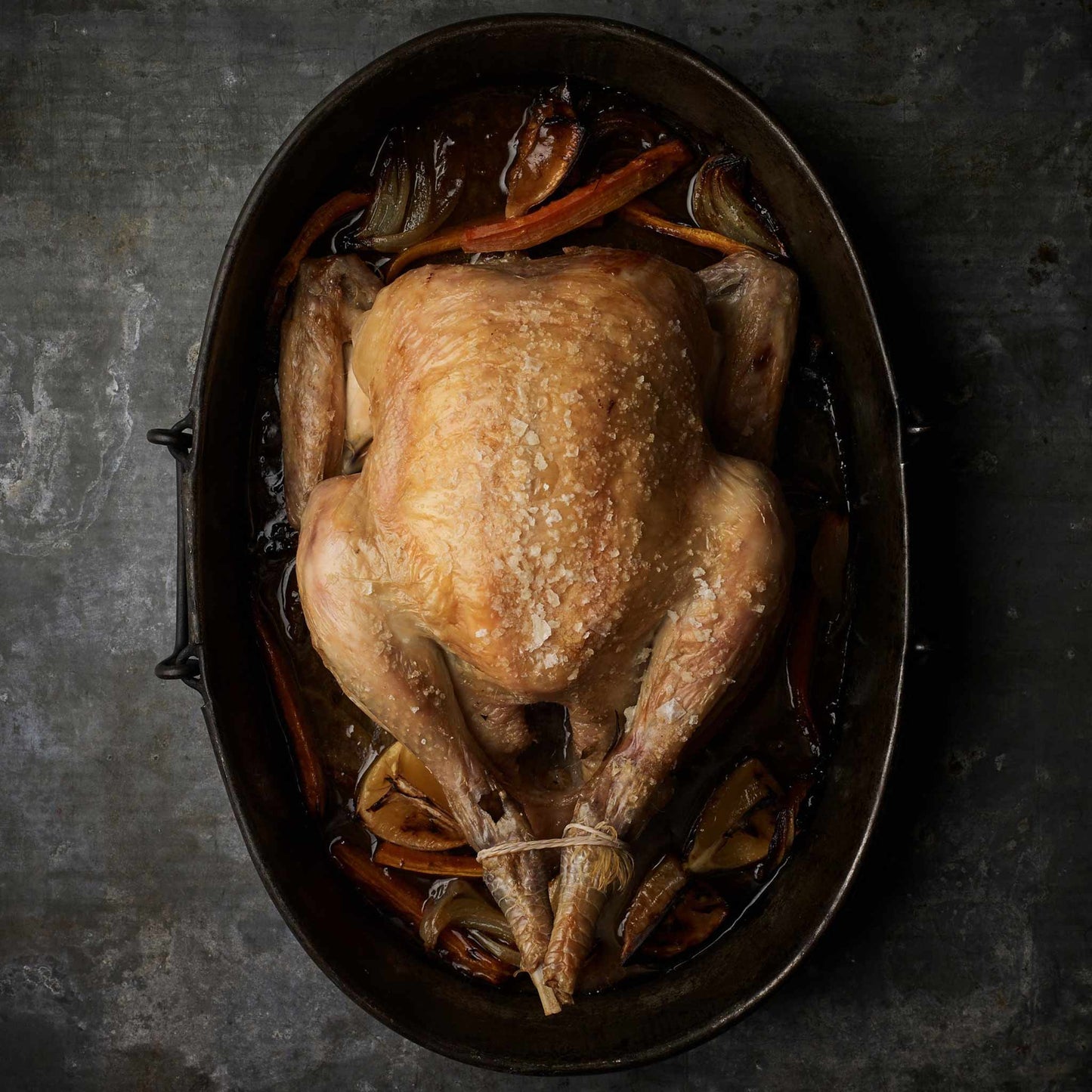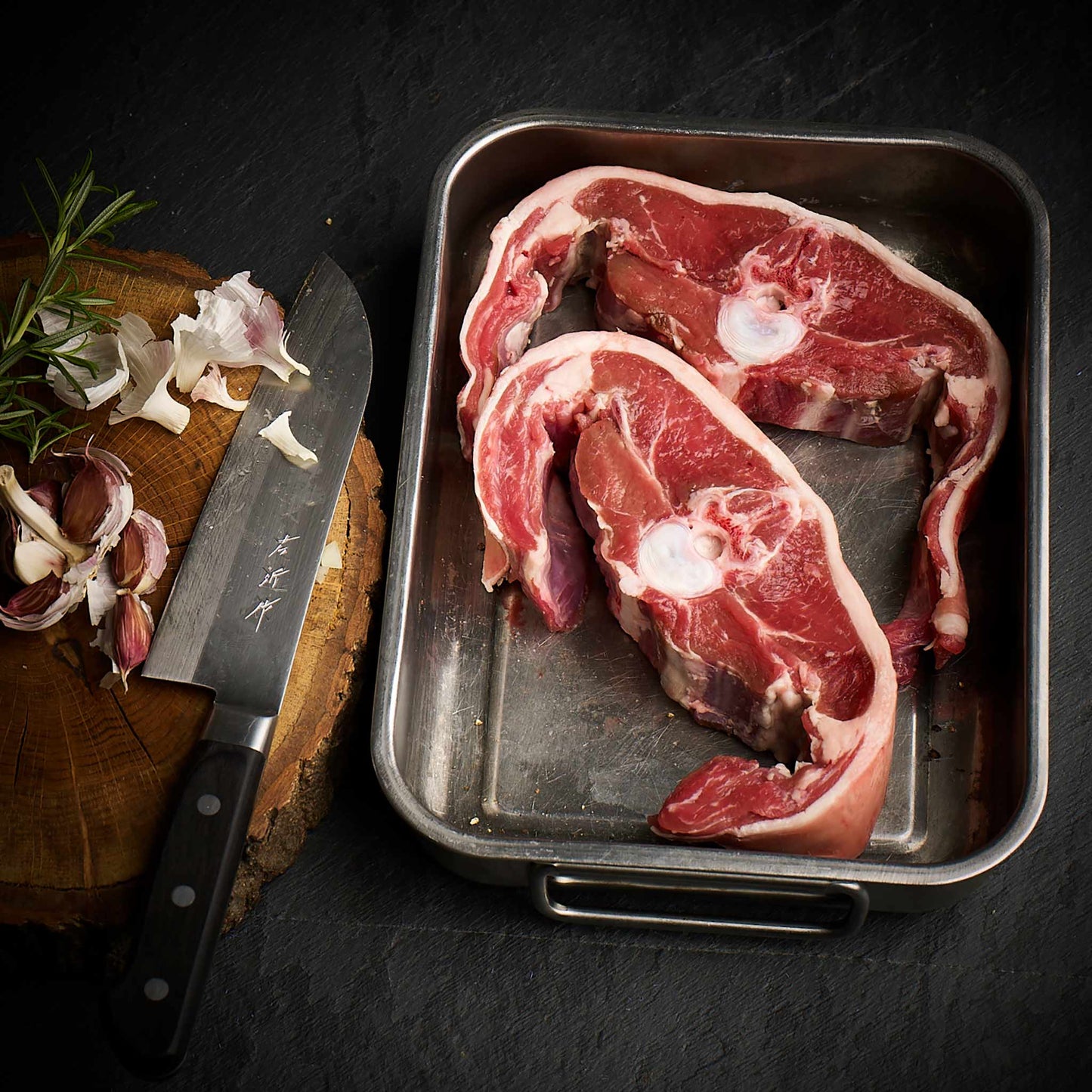We source our chicken from one farm in Leicestershire. The farm is Pasture for Life certified and rears truly free range, outdoor birds.

Do you know what a lupin beans is? We didn't until recently but we're excited about the possibilities they offer as a food source for poultry as they have a very similar amino acid profile to the soybean.
So what's the difference between lupin and soy?
The difference is that soy is grown across the world in the Americas and even if it's not from Brazil it will most likely have been a glyphosate resistant (Roundup Ready) variant and worst case will have been grown on what was previously tropical rainforest. Soy likes it warm, lupin doesn't care, it can grow very well in the UK in poor soils. They also have small nodules on the roots that harbour the Rhizobium nitrogen-fixing bacteria meaning they 'fix' nitrogen into the soil.
So why don't we eat them instead?
An often cited argument against animal agriculture is that since the proteins originate in plants, why don't we skip the middleman and eat the plants?
This overly simplistic narrative has many problems, first of all, plants contain many chemicals that are considered 'anti nutrients' at best and straight up poisons at worst, unfortunately the humble lupin in its untreated state is rather poisonous to us.
However, this bean is eaten in many countries and cultures but careful preparation is needed to remove these toxins.
From Wikipedia:
Lupin poisoning is a nervous syndrome caused by alkaloids in bitter lupins. Lupin poisoning affects people who eat incorrectly prepared lupin beans. Mediterranean cultures prefer the historic bitter lupin beans with the required toxin-removal by traditional leaching in water preparation methods due to the better flavour that results. Improper preparation of bitter lupins with insufficient soaking allows pharmacologically significant amounts of the anticholinergic alkaloids to remain in the beans, and poisoning symptoms result.
While the alkaloids found in raw and dried beans are bitter and unpalatable to many, with soaking the level is reduced. There are several references in medical literature to poisoning caused by errors in lupini preparation.
Symptoms of lupin bean poisoning (from excess alkaloid in cooked food) include dilated unresponsive pupils, confusion, slowed thought and disorientation, flushed face and/or fever, high heart rate and blood pressure, tremors, difficulty with or slurred speech, in-coordination, dizziness, burning dry mouth, stomach pain, and anxiety or "malaise".
But, it's not all bad news. If prepared correctly they can be eaten by us and have some potential health benefits, however the preparation isn't quick.
A web site we found suggested that to make them safe you need the following protocol:
To prepare lupin beans,
1. Cover them with salted water and soak in the fridge overnight.
2. Drain the soaked beans.
3. Boil them in 4x their volume in salted water for 3 hours, then drain them.
4. Cover with salted water in a bowl or jar and soak in the fridge overnight.
5. Pour off the soaking-water and rinse the beans off.
Repeat steps (3) and (4) daily for at least 2 weeks; 3 weeks is better.
Marinate for a couple of weeks, if desired, with the recipe of your preference.
WOW! We think that in this case we're better off letting the chickens filter out these harmful substances for us and we can eat the chicken.
So how does this affect chickens?
Chickens fair better than us against the plant's defence attempts at not being eaten.
From: https://poultry.extension.org/
Lupins, can be incorporated in poultry diets, but the recommended level of inclusion varies depending on the type of lupin and the poultry species in question. The lupin species most typically incorporated in livestock diets include white lupin (Lupinus albus), blue or narrow-leafed lupin (L. angustifolius), and yellow lupin (L. luteus). Unlike soybeans, lupins do not require roasting before they can be fed to poultry.
The main anti-nutritional factors in lupins are alkaloids, which together with phytates, protease inhibitors, and lectins have led producers to restrict the use of untreated lupin grains in the feed. Breeding for low alkaloid content has resulted in the development of so-called sweet lupins. Sweet lupins can make up 40% of broiler diets with no adverse effects on growth, feed efficiency, or carcass characteristics.
So is it being used?
Yes, a little, but this is early days for this mysterious bean. In the drive towards more sustainable UK farming practices, there is ongoing research to find viable alternative protein sources to soya that can be produced in the UK.
What we're excited about is the possibility of growing these on the same farm as the chicken as a spring cover crop removing the reliance on externalities that are ,as we've seen recently subject to volatile prices changes through global events further creating food security for forward thinking British farmers.



